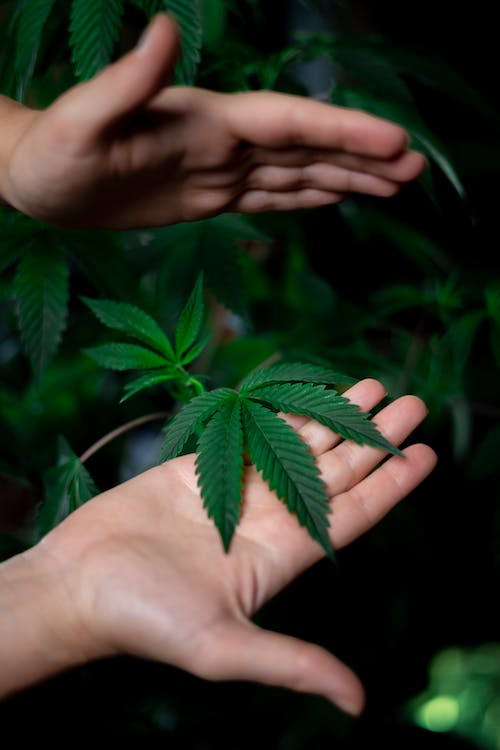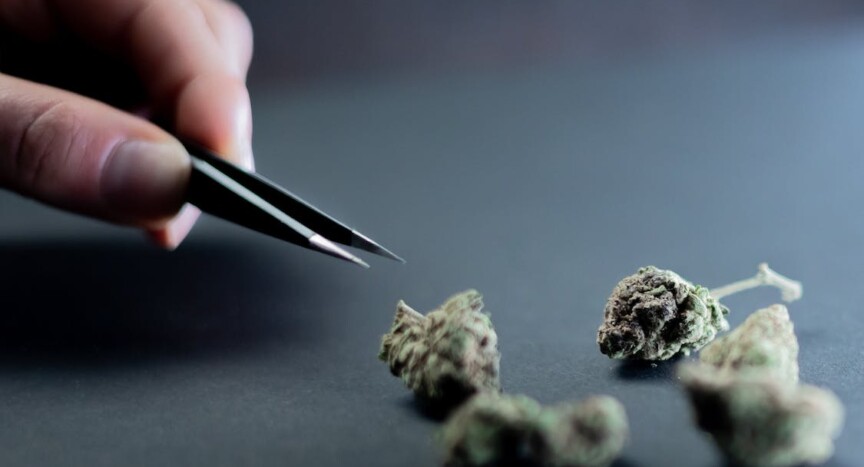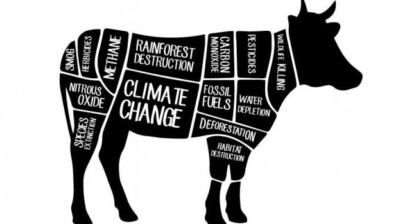*Note: Cannabis will also be referred to as ‘weed’ and ‘marijuana’.
The 1936 anti-drug movie Reefer Madness[1] includes many scenes which have become iconic in American popular culture. Characters going permanently insane from smoking a joint, cheating on their partners, shooting their girlfriends while high, and one man enjoying piano music which rapidly drives him into a cannabis fueled rage, causing him to beat a man to death with a stick. This premise may seem ridiculous to us today, but in terms of exaggeration and scare tactics, public campaigns against cannabis in the west have frequently used a similar approach (e.g. also High School Confidential). This was true across Europe and Australia as well, as the first world largely took their drug policy inspiration from the US.[2] In the twenty-first century Australia’s Stoner Sloth campaign and Michigan’s ‘I’m you in Ten Years’ continued this approach to anti-drug campaigns, and were both widely mocked for their inaccuracies and fear mongering around cannabis use. A Dutch anti-cannabis campaign from 2006 was even found to improve adolescents’ perception of Marijuana use.[3]
This is the crux of the problem; when one makes biased information campaigns it is not likely to hinder drug use amongst adolescents long term, and there is the chance that it will have the opposite effect. If adolescents are exposed to cannabis and find the effects are very different from what has been explained to them, why would they trust that source again? More trust will be placed in their peer group, which makes the myth of cannabis as a harmless substance more believable.
Lost trust
This may not seem like a pressing issue for the Netherlands. They have a famously tolerant drug policy, especially towards cannabis. But it may become even more liberal soon, as many Dutch mayors and drug enforcement authorities are pressing for further liberalisation of Marijuana to make it easier to regulate,[4] and with the US’s habit of setting western drug policy,[5] it would be wise to prepare Europe for similar legalization drives as have been experienced recently in America.
After all, one of the causes of the counter-cultural use of cannabis in 1950s and 1960s America was as a backlash to exaggerations in America’s ‘information’ campaigns. By the 1970s, Reefer Madness was considered so ridiculous it was being shown at hippy film screenings to raise money for pro-cannabis lobbying groups.[6] It was this countercultural scene that allowed many of today’s positive cannabis myths to first spread globally. These include:
- Cannabis does not cause withdrawal symptoms.
- Cannabis isn’t addictive.[7]
- Cannabis use is generally positive for one’s physical and mental health.
Perhaps you believe some of these myths yourself, but they usually aren’t true. There have been numerous studies showing that cannabis is addictive and harmful for many people, especially adolescents,[8] and can lead to long term physical and mental health issues.[9] While most studies also show that these effects are comparable or weaker to alcohol, this hardly makes it a harmless substance, and lethargy and demotivation commonly result from cannabis.[10]

The negative myths spread by Reefer Madness and its ilk should have been buried long ago, but the same can be said about the positive myths it also inspired, as those perceptions never fully disappeared. These myths are now a cause of growing concern, with the rise of multinational cannabis corporations and focused social media weed advertising.[11] [12] There are regulations of course, but they differ regionally, and there are ways around them on social media.
Two of the main paths around drug advertising regulation include offering sponsored content, or purely ‘educational’ content.[13] While surely there are some well-intentioned business owners who will properly inform their customers of the risks of adolescent cannabis use, it would be naive to presume most will. ‘Educational content’ is a way to not only bypass advertising regulations, but to also create future customers by ‘informing’ them of the risks and benefits of cannabis use. This makes the trust of adolescents in public cannabis campaigns crucial; if teenagers are not educated from a public source, they are likely to receive their ‘education’ on cannabis from a company who profits directly from their drug use. If weed is to be legalized without a large negative effect on adolescents, then European information campaigns must focus less on scare tactics, and more on actually providing information.
A Balancing Act
There are a number of approaches public media campaigns can take when informing adolescents, but the best ones seem to revolve around the simple concepts of trust and honesty. Teenagers are already suspicious of anti-drug messaging, and with the western media’s record on this issue, these suspicions are not baseless. However, their trust could be gained through delivering a balanced outlook on cannabis and stressing that there are positives and negatives to its use. This may seem counterintuitive for reducing use among adolescents, but it must be remembered that weed use is not rare among European adolescents in general, nor among Dutch adolescents in particular.[14] If the benefits are explained accurately by an information campaign it reduces the risk that cannabis use will be explained inaccurately by peers and increases the chance that the negative effects will be accepted as a real risk.
The truth of this information could be supported further by involving past users of cannabis to act as sources for the risks of cannabis use. Including recovered users’ voices in the campaign would increase the advertisements’ credibility, as they could explain the positive aspects of marijuana in their life along with the negatives, the dependency issues, and how moderation or quitting improved their lives.
They could also make the tone of the campaign more positive, by emphasising the benefits of quitting, while still discussing the negatives of cannabis.
The use of accurate information and personal experience could also benefit from a less serious tone. Humour can be a hard thing to strike when it comes to drug information (just take a look at the ill-advised ‘Stoner-Sloth campaign linked above. Really, watch it, you won’t be disappointed). But if humour focuses on the positives of quitting, then a lighthearted tone could fit the advertisement. An example of a well-executed campaign is the Ikpas media campaign in the Netherlands, whose advertisements utilize humor and the positive aspects of drinking less alcohol, rather than scare mongering or shaming.
Honesty is the best policy
The topic of drug information and how it should be delivered to adolescents is clearly sensitive, but it also raises greater questions about our society and how we intend to practice education. If we are comfortable giving our children clearly biased information, what does that say about us? What does that say about our mainstream media and health organisations’ trust in teenagers’ ability to remember being deceived? Is lying to our teenagers really anything else than lying to ourselves as a society? There will never be a perfect answer to the question of how to educate people about potentially dangerous substances, but we can at least start with the idea that honesty will build trust. Lies can lead to a more cohesive society in the short term, but trust in national health advice is crucial to a healthy society long term. I think we only have to look at the past hundred years of cannabis information campaigns to know short term gains are not worth the price of lies, even well-intentioned ones. And if the central pillars of European health information cannot be trusted by our youth today, then truly things will fall apart tomorrow.
Reference
[1] ‘Reefer Madness ORIGINAL TRAILER – 1936 (Not the full film)’, Youtube, October 2014.
[2] ‘How the United States Fueled a Global Drug War, and Why It Must End’ Ann Fordham, JUNE 29, 2021
[3] Perspectives on drugs: ‘Mass media campaigns for the prevention of drug use in young people’, European Monitoring Centre for Drugs and Drug Addiction.
[4] Dutch news.nl ‘40 mayors call on next Dutch government to legalise marijuana’, September 23, 2021.
[5] Sinha, J., ‘The History and development of the leading international drug conventions, Prepared For The Senate Special Committee On Illegal Drugs Law and Government Division’, 21 February 2001, LIBRARY OF PARLIAMENT.
[6] Seth Ferranti, ‘WHEN THE GOVERNMENT SAID MARIJUANA MADE YOU CRAZY’, November, 2018, Ozzy.
[7] Jeffrey Chen, ‘9 Myths About Weed That Simply Aren’t True’, June, 2020, Greatist.
[8] Ford KA, et al. Unique functional abnormalities in youth with combined marijuana use and depression: an FMRI study. Front Psychiatry. 2014 Sep 26;5:130. doi: 10.3389/fpsyt.2014.00130. PMID: 25309462; PMCID: PMC4176032.
[9] CDC, ‘What You Need to Know About Marijuana Use in Teens’, April, 2017.
[10] Sian Ferguson, ‘How Weed and Alcohol Stack Up Against Each Other’, February 2020.
[11] Deborah D’Souza, ‘The Future of the Marijuana Industry in America’, December, 2021.
[12] W.J. Comcowich, ‘How Well-funded PR Campaigns Can Stimulate Cannabis Industry Success’, February, 2021.
[13] Eduard Klein, ‘Top Cannabis Business Social Networks You Need To Know 2023’, Eduardklein.com, 2023.
[14] EU, 2017, European Drug Report 2017’, The European Monitoring Centre for Drugs and Drug Addiction.







